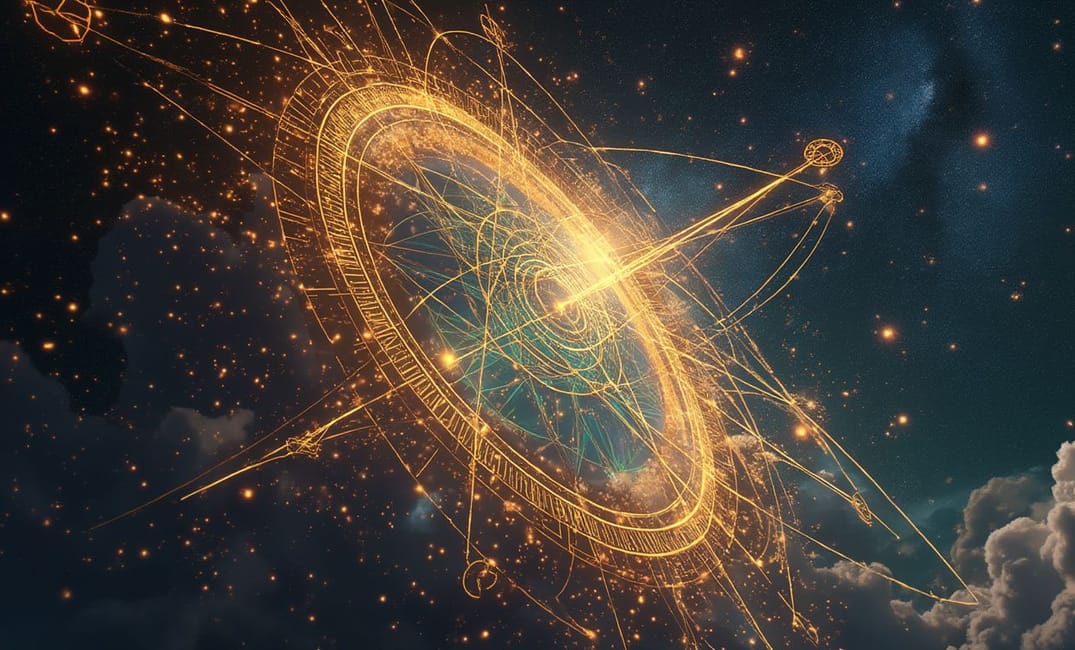Introduction: Unveiling the Patterns of the Cosmos
From the earliest ages, mathematics has served as a cornerstone of human understanding. It is the language geometry shapes spoken, the melody hidden in the arrangement of atoms—an instrument by which the mind interprets the universe's fabric. Mathematics reveals the cosmos's intimate symphonies and humanity's profound curiosity to seek understanding beyond tangible realms. Mathematics is influential, whether through the majesty of architectural marvels, the accuracy of scientific predictions, or the complexities of digital realms. In this entry, we traverse the mathematical odyssey: its evolution in human thought, its diverse applications, and the mysteries it unveils, echoing humanity's relentless quest for truth.
The Genesis of Mathematics: From Primitive Counting to Abstract Thought
Early Beginnings: Numeration and Calculation
- The Dawn of Counting: Mathematics began as practical necessity, with early humans using counting and measurement to manage resources and trade. The development of numeral systems across ancient civilizations—a tally of the essential and sacred sheep—is anthropological testament to mathematics' intrinsic role in societal organization.
- Ancient Numeration Systems: Various ancient cultures developed unique numeral systems, like the Babylonian base-60 system and the Egyptian hieroglyphic numerals, each facilitating commerce, astronomy, and architecture. Their ingenuity laid the foundation for later mathematical exploration.
Birth of Abstraction: Geometry, Algebra, and Beyond
- Euclidean Geometry: The ancient Greeks, particularly Euclid, formalized geometry through postulates and proofs, shaping logical thinking and architectural symmetry. Euclid's "Elements" became a touchstone for mathematical rigor and educational excellence in subsequent epochs.
- Algebra's Evolution: Al-Khwarizmi, in the Islamic Golden Age, crystallized algebra, empowering humanity to solve complex equations and model abstract concepts. Algebra's versatility in representing unknowns paved the path towards modern if time-spanning discoveries.
Mathematics Across Civilizations: A Unifying Thread
Distinguished Contributions and Cultural Exchanges
- Indian Mathematics and the Concept of Zero: Indian mathematicians, notably Aryabhata and Brahmagupta, introduced the ingenious concept of zero and decimal place value. Zero's arithmetic power transformed calculation, paving the way for new branches of mathematics and worldwide progression.
- Chinese Mathematical Prowess: Chinese mathematicians developed solutions to polynomial equations, magic squares, and astronomical calculations. Texts like "The Nine Chapters on the Mathematical Art," exemplify a profound understanding of logic and applied mathematics.
Mathematics in the Modern World: Integration and Progress
- The Renaissance and Mathematical Flourishing: With luminaries like Descartes and Newton, mathematics experienced new rigor and growth, fostering synergies with scientific exploration. Analytic geometry and calculus emerged as crucial bridges uniting mathematics with natural phenomena.
- The Age of Enlightenment and Mathematics: Mathematicians like Euler and Gauss extended mathematical frontiers into number theory and complex analysis. Their work refined accuracy in measurement and meticulously shaped modern scientific inquiry.
The Applied Language of Mathematics: Bridging Theory and Practice
Engineering and Architecture: Structured Elegance
- Architectural Symmetries and Fractals: Mathematics commands elegance, dictating harmony and proportion in structures like the Parthenon or Frank Lloyd Wright’s organic buildings. Concepts like fractal geometry inspire both aesthetic and structural resilience.
- Engineering Triumphs and Modeling Precision: Mathematics undergirds the essence of engineering. From model simulations to integrative computing, mathematics optimizes processes, enhances safety, and fosters creativity, evolving disciplines like aviation, civil constructs, and robotics.
Science and Technology: Insight Beyond Borders
- The Language of Physics: Mathematics bridges the abstract and real, allowing physicists like Einstein to formulate theories of relativity. Equations illustrate natural laws—a testament to mathematics’ explanatory power transcending visible reality.
- Biology, Medicine, and Mathematical Modeling: Mathematics optimizes biological processes, from modeling ecological dynamics to simulating outcomes of medical interventions. Statistical analysis and complex algorithms drive modern research, enhancing precision and potential discovery.
Mathematical Frontiers in the Digital Age
- Cryptography and Cybersecurity: Mathematics forms the backbone of digital security, utilizing complex algebra and prime number theory. Cryptographic advances protect data integrity across global networks, underscoring mathematics’ critical role in a digital world.
- Machine Learning and Algorithmic Intelligence: Mathematical algorithms are linchpins in AI, resonating as neural pathways within machine learning models. They dissect patterns, recognize sentiments, and drive technological innovation, human educative experiences enhanced through mathematics.
The Philosophical Dimensions of Mathematics: Delving into Universality
Mathematics: Art, Philosophy, and Truth
- The Elegance of Mathematical Beauty: Artists and philosophers regard mathematical theorems as objects of beauty, embodying simplicity, universality, and coherence. Mathematical symmetry resonates as poetic grace, revealing life's hidden aesthetic truths.
- Mathematical Platonism and Reality: Philosophical debates on whether mathematics is discovered or invented raise questions about the nature of reality and human experience. Martian philosophers would descend to argue on the objective existence of mathematical frameworks.
Mathematics as Universal Language: Connectivity and Exploration
- Universal Communication and Expression: Mathematics transcends linguistic diversity, providing a shared framework for understanding cosmic truths and human challenges. Its universals, articulated from grand scientific theories to cellular automata, bridge cultures and disciplines alike.
- Cosmic Symmetry and Mathematical Paradoxes: Mathematics explores universal ambitions but faces residual paradoxes and enigmas. Mathematicians continue the quest, deciphering clues within symmetry, like the Riemann Hypotheses and understanding quantum quirky conundrums.
Conclusion: The Ever-Expanding Mathematical Canvas
In the grand tapestry of human achievement, mathematics stands as both tool and masterpiece, revealing truths woven into the universe's very architecture. Its stories, perpetually unfolding, celebrate humanity's curiosity and reflect a ceaseless quest for unity, beauty, and understanding.
As we chart futures among stars, mathematical exploration promises to illuminate paths, crafting connections among all of humanity's constellations. The language of numbers stands resilient, humming universal harmonies that resound through the galaxies.
"In mathematics, we glimpse the infinite—an interplay of numbers and notions that codifies our existence, narrates our odyssey, and designs the dreams with which we forge our future’s stars."
MATHEMATICAL FRONTIERS, UNIVERSAL LANGUAGE, SYMMETRY, PHILOSOPHY, MATHEMATICS, MATHEMATICAL DISCOVERIES, COSMIC EXPLORATION, SCIENCE TECHNOLOGY, CIVILIZATION

